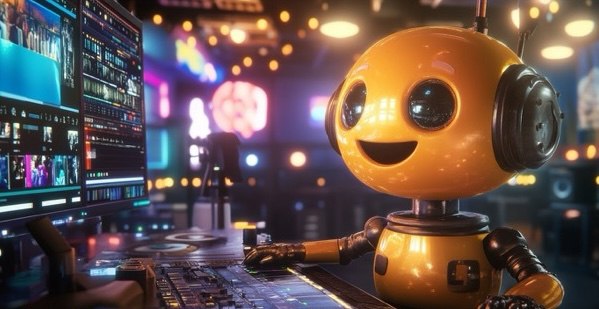
How to Generate a Video
The future has arrived, and there’s no need to find locations, actors, or study the principles of composition for a video yourself. A simple query — and the neural network will generate video content based on your description. How to generate a video using a neural network, how it works, and what are the pros and cons — read all about it in this article.
Is Video Generation Possible Using Neural Networks
Yes, these capabilities have emerged, and there are already more than 10 neural networks that can help turn your text into an interesting video.
The principle of artificial intelligence remains the same as for writing texts or generating images. AI is trained on millions of different videos, memorizing the characteristics of different objects’ movements and their attributes. Photos and pictures also help to compile a “database.” Text descriptions are necessary as well because they link the image and the concept. Through texts, the neural network understands that a specific description corresponds to a certain object.
So, how to generate a video? A familiar and simple algorithm works here too:
- AI receives the user’s request;
- the request is broken down into key concepts;
- in its database, the neural network searches for “examples” that correspond to the key concepts and words of the request;
- based on the retrieved information, AI generates individual frames;
- frames are connected in the necessary sequence — creating a video.
But artificial intelligence can do more than just generate a clip from scratch; its capabilities are much broader. This includes animation, adding special effects to your videos, “animating” photos and images. You can remove or add objects in a frame, change the background, replace faces, and so on.
A neural network can create instructional films, music videos, realistic models of any object, or even a game world with its characters. The possibilities are vast, and they are all available to regular users.
How to Generate a Video Using a Neural Network
The first step is to find a service suitable for your needs. There are quite a few, each with its specialization. However, there are no fundamental differences in how to generate a video using a neural network, as the algorithms are the same everywhere. The differences lie in the interface and functionality of the services.
For example, Visper by Sber helps create a video presentation with a virtual ‘lecturer,’ similar to what Synthesia offers.
Services like Designs.ai, Fliki, Lumen5, Pictory offer diverse possibilities. We should also mention neural networks like Kandinsky, Stable Diffusion, Google Imagen Video, RunwayML.
And how to generate a video using a neural network for free? Look for a free service. For example, Kandinsky generates a short clip based on a text description for free. Pixverse creates videos from images, enhances frame quality — also for free.
But its capabilities are limited, as is the content quality. Many services offer free generation, though limited and with a watermark. This allows you to assess the AI’s capabilities, practice writing prompts, and get used to the interface. However, for regular work, you’ll need to purchase a subscription.
Now for how to generate video content. It’s straightforward:
- Register and log in to the website/app.
- On the homepage, click the start button—this can be “New File,” “Start Generation,” and so on.
- Set the video parameters in the settings.
- Upload a picture, recording, or input a prompt—depending on your goals.
- Click the button to start the generation process.
However, there’s a nuance: no AI can make long films. Currently, there aren’t enough resources for this, even with powerful AIs. But there are ways to generate long videos using neural networks. However, it will take time because you’ll need to create separate segments, with each subsequent segment generated based on the previous one. Once all segments are ready, you need to combine them into one video, smoothing transitions.
Pros and Cons
Creating videos using artificial intelligence is fascinating, convenient, and accessible to everyone. Key advantages of neural networks include:
- Quite high speed of work;
- The ability to create creative clips with unconventional images that would take a long time to create manually;
- Enables creative realization without long-term training;
- Simplified creation of videos for a specific target audience;
- Simplification and automation of routine work.
However, there are also cons:
- AI does an excellent job with the scene, lighting, background, and inanimate, stationary objects. But people or animals in motion don’t turn out as well (sometimes terribly).
- The duration of the material is limited to a few seconds, constraining possibilities — if you need a 10-minute video, it has to be generated in parts.
- Since AI uses pre-existing data, there may be issues with content originality. You can never predict the generation result, and it can be anything.
Conclusion
Creating a presentation, promotional video, improving an existing video, or adding special effects to it — all of this is easy with artificial intelligence. It has its pros, and it has cons, but AI is evolving. Perhaps soon, it will stop generating centipedes instead of ballerinas and athletes. But cats already turn out well.

